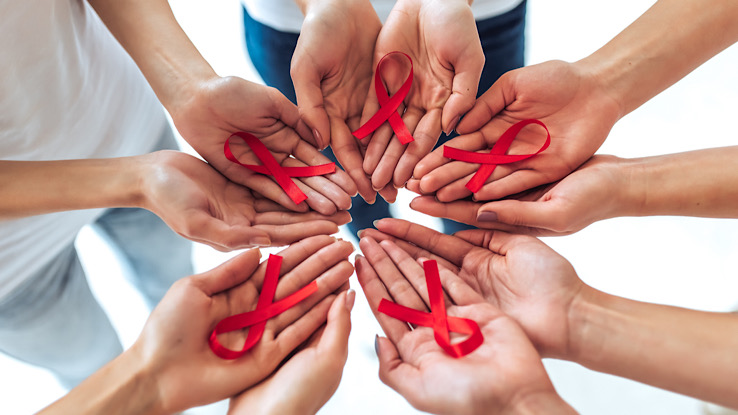
With all of this scientific work on using stem cell transplants to treat HIV, along with the media coverage of people being cured of their HIV, there is understandably a lot of interest in this area of research now. However, there are several challenges involved with using stem cell transplants for HIV/AIDS patients. While you may think that everyone with HIV can be cured with a stem cell transplant, most people aren’t able to get this treatment. Scientists are on the road to curing HIV, but they haven’t yet found a treatment that can work for everyone. Read on for more about this new area of medicine and research.
Road To the Cure of HIV
In the last few decades since the emergence of HIV/AIDS, scientists have tried using stem cell transplantation as a treatment. The idea was to replace the immune cells that are deficient in HIV/AIDS patients. It wasn’t until recently that they could do stem cell transplants with cells that are actually resistant to the HIV virus. And since that success, there was a launch of a new research initiative, the European Project to Guide and Investigate the Potential for HIV Cure by Stem Cell Transplantation (or EpiStem).
HIV and Its Treatment
Human immunodeficiency virus (HIV) is a virus that invades a type of immune cell in your body called a CD4+ T-cell. When HIV infects many of your CD4+ T cells, your immune system becomes severely weak, and your body can’t fight off infections. If HIV is left untreated for a long time, you can develop acquired immune deficiency syndrome (or AIDS).
The standard treatment for HIV is antiretroviral therapy or ART. This is a medication therapy where you use multiple drugs in combination to prevent HIV from doing further damage to your immune cells.
Who Is Cured of HIV?
A few people have been cured of HIV, but stem cell transplant treatment won’t work for everyone. The first person to be cured of HIV was a man referred to as the Berlin patient. He was diagnosed with cancer in 2006, and his doctor treated him with a stem cell transplant.
Stem cells are young cells that can still grow into many different cell types. A stem cell transplant is a procedure where a doctor places stem cells in your body, and doctors sometimes give patients stem cell transplants to treat cancer.
But the stem cells transplanted into the Berlin patient were unique. They had a mutation called CCR5-delta32 that prevents HIV from infecting immune cells. After the transplant, not only did his cancer symptoms go away, but his HIV symptoms went away too. Doctors checked to see if HIV was still in any part of his body and couldn’t find the virus anywhere. He lived without HIV for 13 years before passing away when his cancer symptoms returned in 2020.
Some doctors tried treating other people with HIV with stem cell transplants but weren’t as successful. In general, it’s difficult to cure HIV because it’s a virus that can escape treatment by becoming latent. This means it is no longer replicating and just sits quietly in your cells. It took many years after the Berlin patient for doctors to cure other HIV-positive patients with stem cell transplants. Similar to the Berlin patient, there are four HIV-positive patients who had cancer cured of HIV by getting stem cell transplants with the CCR5-delta32 mutation.
Why Can’t We Cure Everyone?
While stem cell transplants seem to be an effective HIV cure for some patients, there are some challenges to using this treatment, such as:
Finding the right donor
The donor must be compatible with the recipient by human leukocyte antigen (or HLA) type. This indicates the type of protein found on the surface of your cells. The donor must also have the CCR5-delta32 mutation in their DNA, which is the mutation needed for providing HIV resistance to the transplanted cells. This mutation is rare in the population of stem cell donors. When combined with the HLA compatibility requirement, each patient has even fewer potential donors.
Rejecting the transplant
Stem cell transplants also can cause a complication called graft versus host disease (or GVHD). This occurs when you receive a transplant, and the cells in that transplant attack your body. Just like your body has an immune system that protects you from things that can cause you harm (like bacteria), transplanted stem cells may view your body as foreign and attack you once inside your body. In fact, some of the patients cured of HIV developed GVHD. It is a serious but treatable complication of transplantation.
Accessibility
Most people who have HIV/AIDS live in low and middle-income countries. They generally don’t have access to the specialized doctors who perform stem cell transplants. Stem cell transplants are expensive. One study estimated that it could cost hundreds of thousands of dollars. This treatment must be administered at specialized hospital facilities with doctors and nurses who are trained in this type of treatment. The facilities must also have the resources to care for these complicated patients and manage any serious side effects. As a result, these treatments tend to be available in resource-rich settings. This is not necessarily aligned with the areas of greatest disease burden.
Overall, there are several challenges with treating HIV/AIDS patients with stem cell transplants. However, there are still ongoing research efforts to make this treatment safer, more effective, and more widely available in the future.
What’s Next?
While stem cell transplants are often used to treat cancer patients, it’s not yet confirmed to be a safe and effective treatment for HIV/AIDS patients. However, scientists hope that further research on the CCR5-delta32 mutation may produce a more accessible cure for HIV. If you have HIV/AIDS, you should speak with your doctor about what treatment options are right for you. And you can continue to look out for new treatments as they become available in the coming years.






